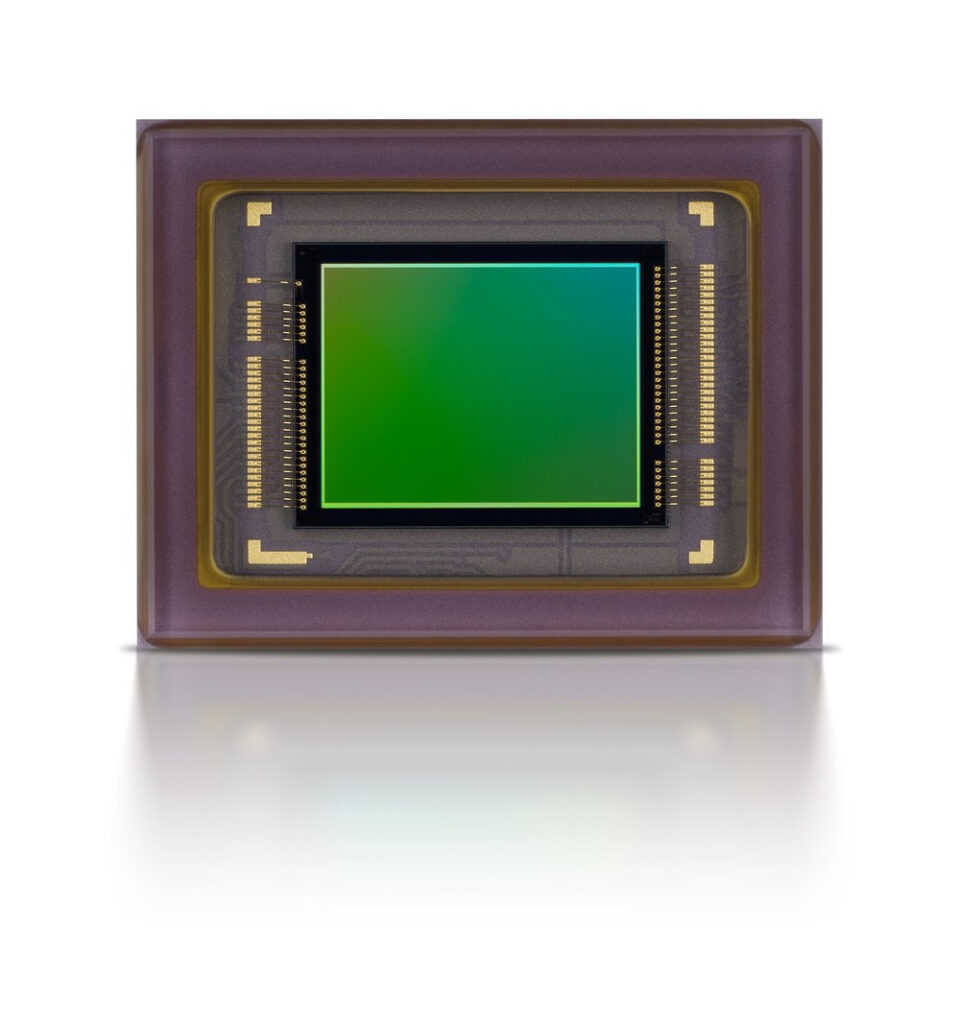
Sony Semiconductor Solutions Corporation announced the upcoming release of the IMX675, a 1/3-type CMOS image sensor for security cameras with approximately 5.12 megapixels*2 that simultaneously delivers both full-pixel output of the whole captured image and high-speed output of regions of interest.
Sony Semiconductor Solutions Debuts Industry-First CMOS Image Sensor for Security Cameras Delivering Full-Pixel Output
In an industry first,*1 the new sensor from SSS leverages Dual Speed Streaming technology to output all of the pixels in a captured image at a maximum rate of 40 frames per second while simultaneously outputting specific user-set regions of interest at high speed. Using this image sensor allows a single camera not only to provide comprehensive images of scenes but also to support high-speed recognition of specific objects at a high level of detail.
The new sensor also employs unique STARVIS 2 technology from SSS, which delivers high sensitivity and a wide dynamic range, but with approximately 30% less power consumption than conventional models,*3 thanks to its proprietary stacked structure.
The requirements for security cameras vary depending on where and how they are used. At the same time, keeping the number of cameras optimized at a minimum is necessary to keep system costs low.
Thanks to proprietary Dual Speed Streaming technology from SSS, the new sensor can simultaneously output the whole captured image and specific regions of interest at different frame rates, enabling the capture of a comprehensive image of the scene while also accurately recognizing quick-moving objects, all with a single camera. This design helps reduce system costs. The new sensor can be used to capture, for example, the whole image of an intersection while recognizing people and cars moving through it, or to capture an overall image of a highway while also capturing the details needed to identify the license plate numbers of cars traveling on it.
Additionally, STARVIS 2, a technology that delivers high sensitivity and a wide dynamic range, but with approximately 30% less energy consumption than conventional models,*3 enables a dynamic range of 78 dB, approximately 2.5 times that of conventional models,*3 when used in a single exposure method. As a result, the new sensor product has potential applications beyond security cameras, for instance in drive recorders and webcams, both of which are seeing increasing demand in recent times.
This image sensor is the industry’s first*1 to employ Dual Speed Streaming technology to simultaneously output all pixels in a captured image at a maximum rate of 40 frames per second while also reading specific regions of interest at a high frame rate, a feat made possible by its original readout circuits. The location of the region of interest in the frame can be specified vertically, together with the corresponding frame rate. Depending on the purpose, users can choose to read only the necessary region at high speed to lessen the load on the camera system at a later stage by reducing the amount of data compared to the conventional method of reading all pixels.
This product utilizes a stacked structure, employing a Cu-Cu connection*4 between the pixel unit and circuit unit, to achieve an optimized layout for multiple high-speed signal processing circuits. This results in significantly lower power consumption, approximately 30% lower than conventional models.*3 In many cases, security cameras operate around the clock, creating issues such as power consumption costs, impact on the environment, and camera heat generation. With this new sensor, the number of heatsink components in the camera system can be reduced, lowering the overall system cost and contributing to reducing the impact on the environment.
*4: Technology that provides electrical continuity via connected Cu (copper) pads when stacking the pixel section (top chip) and logic circuits (bottom chip). Compared with through-silicon via (TSV) wiring, where the connection is achieved by electrodes intruded around the circumference of the pixel area, this method gives more freedom in design, improves productivity, allows for a more compact size, and increases performance.
The new image sensor employs STARVIS 2 technology developed by SSS, which uses unique processing technology to increase the area of the light-receiving unit despite pixel size limitations, resulting in a wide dynamic range in a 1/3-type 5.12-megapixel format. This design delivers a dynamic range approximately 2.5 times wider than conventional models,*3 at 78 dB, thereby enabling high-precision monitoring.
The new product comes with a proprietary device structure from SSS, where irregularities are incorporated into the incidence planes of the light receiving unit to refract incident light and thereby enhance the absorption rate of invisible near-infrared light. This design results in a sensitivity approximately 2.5 times greater than conventional models,*3 making it possible to capture high-quality images even in near-infrared situations, which is often used in dark scenes and at night.





